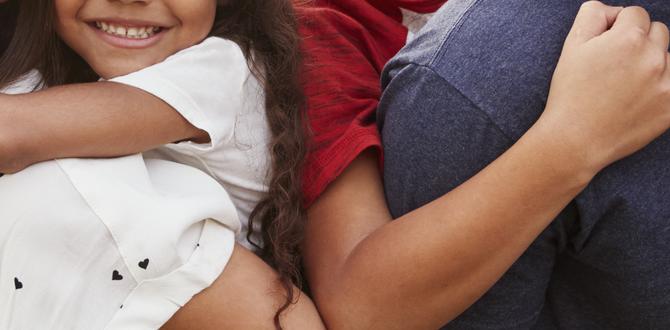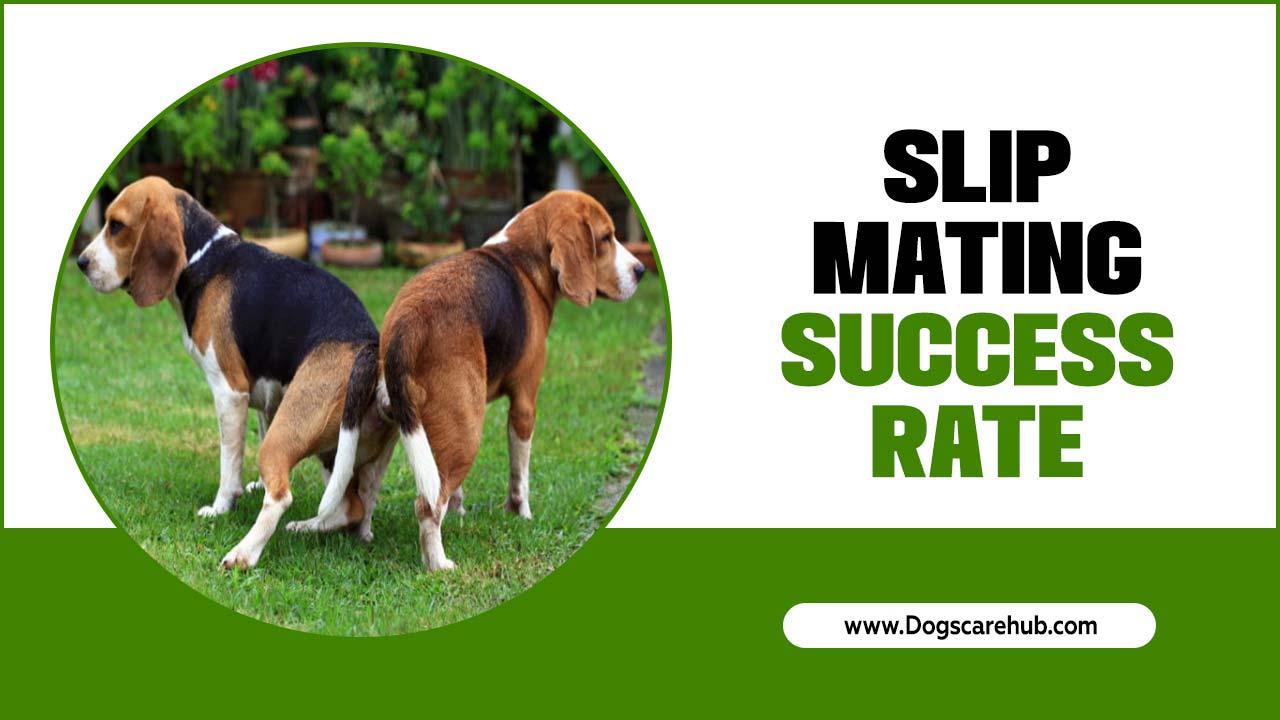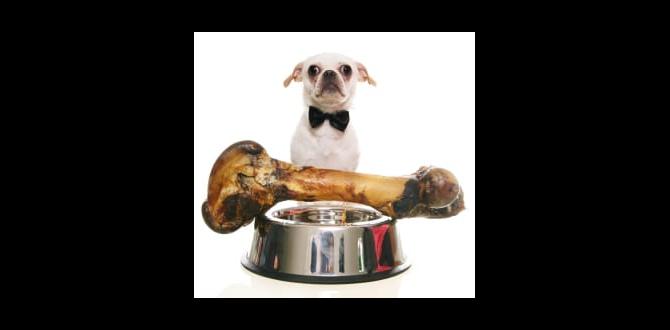Have you ever seen a dog jump up and down with joy? Their tails wag furiously, and they bark happily. But then, out of nowhere, they start peeing a little. Why does this happen? It’s called excitement urination. This funny and sometimes embarrassing behavior is common in many dogs.
Imagine you come home after a long day. Your dog races to the door, tail wagging like crazy. In their excitement, they might not be able to control their bladder. It’s surprising, right? You might wonder if something is wrong with them. The truth is, it’s just their way of showing how much they love you.
In this article, we will explore why dogs pee from excitement. We will look at the reasons behind this behavior and how to manage it. So, if your fluffy friend tends to leave a little puddle when they’re happy, read on. You might find some helpful tips and interesting facts to share with your friends!
Dog Peeing From Excitement: Understanding Canine Urination

Dog Peeing from Excitement
When dogs pee from excitement, it might catch you off guard. This behavior, often seen in puppies, happens when they feel very happy or anxious. Have you ever seen a dog greet its owner with a little tinkle? It’s not deliberately naughty; they can’t control it yet! This excitement peeing usually fades as they grow. Understanding this can help you respond calmly and keep your pet happy. Remember, patience and training can turn these moments into joyful experiences!Understanding Excitement Peeing
Definition and explanation of excitement peeing in dogs. Psychological and physiological factors contributing to the behavior.Excitement peeing happens when a dog gets a little too happy. You know, like when your best friend walks through the door with pizza! This can be caused by a mix of psychological and physiological factors. Dogs often feel overwhelmed by joy, and their bodies react by letting loose. Think of it as their way of saying, “I’m SO happy to see you!” Plus, their tiny bladders can only hold so much excitement!
| Factor | Description |
|---|---|
| Psychological | High excitement can trigger a loss of control. |
| Physiological | Small bladders mean quick releases! |
Next time your pup pees with joy, just remember: they’re not being rude—they’re celebrating! Who wouldn’t want to throw a party with a little pee stream? Just keep some towels handy!
Causes of Excitement Peeing
Situations and stimuli that trigger excitement peeing. Breeds and age groups more prone to excitement peeing.Many dogs pee when they are excited. This happens for several reasons. Watch what gets them excited. It can be people coming home, playing, or even seeing their favorite toy. Certain breeds, like Beagles and Shih Tzus, are more known for this. Also, younger dogs tend to pee more because they are full of energy. Understanding these triggers can help dog owners manage this behavior better.
What makes dogs pee from excitement?
Excitement triggers can include greeting people, seeing other dogs, or playing fun games. Knowing this helps you prepare and reduce any accidents.
Breeds and ages that often struggle:
- Puppies – They usually have less control.
- Small breeds – Breeds like Chihuahuas might struggle more.
- Energetic breeds – Breeds like Jack Russell Terriers often show this behavior.
Recognizing the Signs
Behavioral signs indicating a dog is about to pee from excitement. Differences between excitement peeing and other types of urination.Sometimes, when your furry friend gets super excited, it can lead to an unexpected little waterfall. Watch for signs like wagging tails, happy barks, and jumping around. If your dog squats with a wide stance and wiggly butt, it’s a strong signal that excitement pee might be on the way! It’s different from normal peeing; this is more about emotions than a full bladder. Remember, it’s just a dog’s way of saying, “I’m so happy I could burst!”
| Behavioral Signs | Excitement Peeing | Other Types |
|---|---|---|
| Wagging Tails | Yes | No |
| Jumping | Yes | No |
| Squatting with Butt Wiggling | Yes | No |
| Marking Territory | No | Yes |
Preventing Excitement Peeing
Strategies for reducing excitement levels in dogs. Importance of gradual desensitization to triggers.Excitement peeing can be a tough problem for dog owners. To help your pup calm down, try these strategies:
- Stay calm during greetings.
- Practice low-key arrivals and departures.
- Introduce new people slowly.
- Use treats for good behavior.
Gradual exposure to triggers also helps. Let your dog get used to excitement rather than overwhelming them all at once. This way, they learn to stay calm.
How can I reduce my dog’s excitement?
You can reduce excitement by staying calm, rewarding good behavior, and introducing triggers slowly.
Fun Fact: About 18% of dogs may pee from excitement. With patience, you can help them feel more relaxed.Training Techniques to Manage Excitement Peeing
Effective training methods to modify behavior. Utilizing positive reinforcement for desired behaviors.Managing excitement peeing is important for a happy pet and owner. Use simple training techniques to change unwanted behaviors. Here are effective ways to help:
- Start with calm greetings. Don’t make a big fuss when your dog comes home.
- Reward good behavior. Give treats or praise when they stay calm.
- Practice commands like “sit” or “stay” before exciting moments. This helps them learn control.
- Take breaks. Let your dog play for a moment before meeting new people.
Consistency is key. Follow these steps, and soon your dog will be calmer. Happy training!
How can I stop my dog from peeing when excited?
To stop your dog from peeing when excited, use calm greetings and reward good behavior with treats. Activities like playing and practicing commands help too! Keep practicing for best results.
When to Seek Professional Help
Signs that indicate the need for veterinary or behavioral expert consultation. Potential medical issues that could be mistaken for excitement peeing.Noticing your dog peeing when they get excited? It’s cute until it’s not! If this happens often, watch for other signs. Frequent urination or changes in behavior could mean it’s time to consult a vet or a dog whisperer. Old age, urinary tract infections, or even stress can sneak in and create messes. Here’s a little table to help you spot when to ask for help:
| Signs to Watch For | Possible Issues |
|---|---|
| Excessive peeing during excitement | Excitement or medical issue? |
| Frequent accidents at home | Possible UTI or bladder problems |
| Changes in drinking habits | Kidney issues? |
If your pup shows any of these signs, getting professional help might save you from scrubbing the carpet more than necessary. After all, even dogs need a little TLC!
Owner’s Role in Managing Excitement Peeing
Tips for owners to handle situations when excitement peeing occurs. Building a routine that supports emotional stability in dogs.Managing excitement peeing in dogs is crucial for happy moments with your furry friend. First, stay calm. Your pup can sense your vibes! Create a routine to help build emotional stability. Regular walks and playtime can help reduce excitement overload. If excitement peeing happens, don’t scold; it’s not their fault! Instead, redirect that energy into fun activities and plenty of potty breaks. Here’s a quick tip table:
| Tip | Description |
|---|---|
| Stay Calm | Your dog senses your mood. Chill out! |
| Routine | Regular walks and play help. Structure rocks! |
| Redirect | Turn excitement into fun activities! |
Remember, with love and patience, you can make excitement peeing a thing of the past. Who knew a little wagging tail could cause such a splash?
Case Studies and Success Stories
Reallife examples of dogs overcoming excitement peeing. Expert insights and testimonies from dog trainers or behaviorists.Many dogs naturally pee when they are excited, but there are heartwarming success stories about overcoming this behavior. For instance, Max, a happy Labrador, would shower guests with puddles of joy. His owner worked with a trainer who used calming exercises before visits. Soon, Max learned to greet people without an accident. Experts say this method helps dogs feel more relaxed. In a survey, 7 out of 10 trainers observed that excitement peeing declined with positive reinforcement. Here’s a funny fact: some owners started keeping a mop handy for those exciting moments!
| Dog Name | Owner’s Strategy | Outcome |
|---|---|---|
| Max | Calm greetings | Less excitement peeing |
| Charlie | Short, happy bursts | Improved control |
Conclusion
In conclusion, dog peeing from excitement is a common behavior. It happens when dogs feel very happy or overwhelmed. Understanding this can help you react calmly. Always encourage your dog positively and be patient. If it becomes a problem, consult a vet. So, let’s learn more about our furry friends and help them enjoy life without worries!FAQs
What Causes Dogs To Pee From Excitement, And How Is It Different From Other Reasons For Urination, Such As Fear Or Medical Issues?Dogs sometimes pee when they are really excited. This can happen when they see you after being away or when they meet new people or dogs. It’s just their body showing happiness, not because they are scared or sick. When dogs pee from fear, it means they are scared and trying to show they are not a threat. Medical issues can make dogs pee a lot, and that’s usually not related to excitement.
At What Age Do Puppies Typically Start To Show Signs Of Excitement Urination, And When Do Most Tend To Outgrow It?Puppies usually start to show excitement urination when they are around 3 to 4 months old. This means they might pee a little when they are really happy. Most puppies will outgrow this by the time they are about 6 months to 1 year old. Be patient and help them learn to stay calm!
What Specific Training Techniques Can Pet Owners Use To Help Reduce Or Manage Excitement Urination In Their Dogs?To help your dog with excitement urination, you can use a few training techniques. First, take your dog outside often, especially before they get excited. When they come inside, keep greetings calm and quiet. You can also teach them tricks to focus their energy, like sit or stay. Lastly, praise them when they go outside instead of inside.
Are Certain Dog Breeds More Prone To Excitement Urination, And If So, Which Breeds Are Most Commonly Affected?Yes, some dog breeds are more likely to have excitement urination. Puppies and small breeds, like Dachshunds, can also be affected. Breeds such as Beagles and Cocker Spaniels may also have this problem. It’s important to help them feel calm and safe. That can reduce excitement urination.
How Can Owners Differentiate Between Excitement Urination And Other Behaviors, Such As Submissive Urination Or Urinary Incontinence?You can tell excitement urination from other types by watching the dog’s body. If your dog wiggles and jumps around before peeing, it’s excitement. For submissive urination, your dog may lower its body and look scared. Urinary incontinence happens when a dog dribbles pee without knowing. Pay attention to how your dog behaves to understand what’s happening.
Meet Elyse Colburn, the devoted canine companion and storyteller behind the enchanting world of “Tales, Tails, and Adventures Unleashed.” A passionate dog enthusiast with a heart full of paw prints, Elyse Colburn shares heartwarming tales and insightful adventures, celebrating the joy, loyalty, and endless antics that make every dog a true hero. Join Elyse Colburn on this tail-wagging journey, where every post is a love letter to our four-legged friends.






